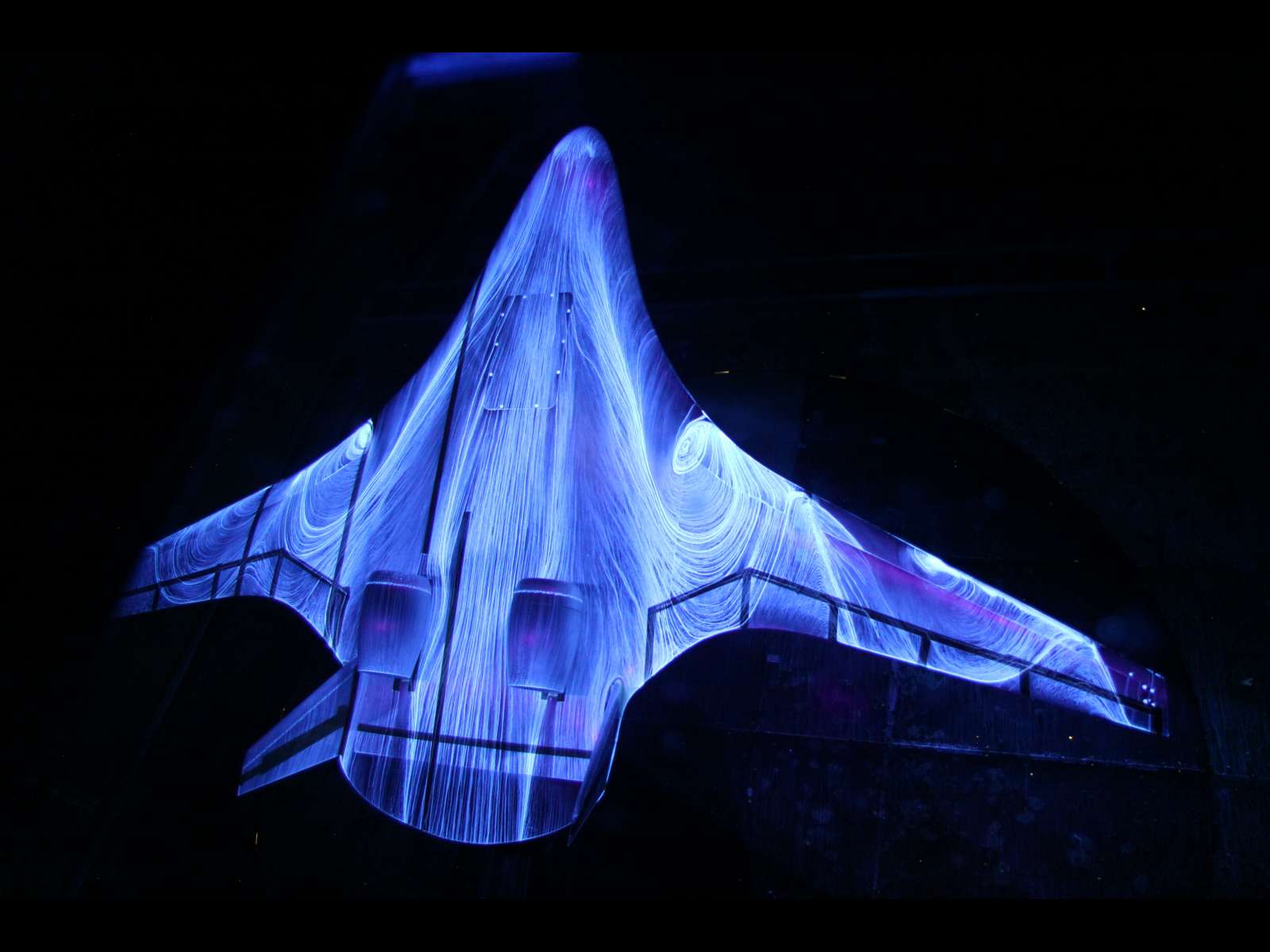Airplane of the Future?
This plane looks blue under ultraviolet light, but it’s designed to be green.

Credit: NASA Langley/Preston Martin
This experimental aircraft glows blue, but it’s actually green. Part of NASA’s Environmentally Responsible Aviation (ERA) project, the plane’s design blends wing into body in an attempt reduce the amount of fuel it uses and pollution it causes.
The conventional tube and wing design has dominated the commercial fleet for decades because it flies remarkably well, says Greg Gatlin, a researcher at NASA’s Langley Research Center in Virginia. But it’s not as efficient as it could be. In 2012, U.S.-based airlines burned 10.6 billion gallons of jet fuel, which cost more than $30 billion and added significant amounts of carbon dioxide to the atmosphere, according to NASA. (Worldwide, aviation produces about 2.5 percent of CO2 emissions, according to an article on the Brookings Institution website.) The agency wants to cut those figures in half by 2020.
To do so, NASA is developing and testing new design concepts that airplane manufacturers can later adopt. “NASA focuses on the longer-term, more challenging research, because the airline companies can’t as easily afford to pursue that,” says Gatlin, the lead research engineer for a wind tunnel investigation on the aircraft above.
The pictured plane’s “hybrid wing body” design is one such idea. Though the aircraft hasn’t been built to full-scale yet, studies so far suggest that its design should help slash fuel consumption by more than 25 percent of what a traditional commercial plane burns. That would translate to a decrease in noxious gas emissions, such as CO2 and sulfur dioxide, a contributor to acid rain.
The design also decreases noise pollution. In a standard tube and wing design, for example, the noise propagates straight down from the engines, into residential neighborhoods. But in this plane’s case, the engines are mounted on top of the craft. “A big benefit of that is that noise generated by the engines is shielded by the body,” Gatlin says.

Before aircraft like this can be scaled-up and adopted commercially, however, they must undergo rigorous testing under a variety of conditions. For instance, the photograph illustrates the results of a wind tunnel experiment investigating the plane’s ability to generate lift, one of the four forces that govern flight. (New aircraft models will still have to juggle these forces, which also include thrust, drag and weight.) Good, smooth airflow is critical to generating lift—without it, gravity wins, and the plane can’t fly.
To visualize airflow around the plane, Gatlin coated it in oil that glows under ultraviolet light. The bright lines offer insight into the plane’s flight performance, revealing a breakdown in airflow over the wing that could cause it to both lose lift and slow down. But the whorls aren’t necessarily a cause for concern, Gatlin says—that particular test was done under an extreme takeoff and landing scenario, far outside the realm of normal flight conditions.
A plane like this wouldn’t be commercially available until 2020. But if it happens, passengers should feel lighter knowing their ride is a bit easier on the ears, and the air.
Andrew is a New York-based freelance writer. He was Science Friday’s intern during fall 2013.